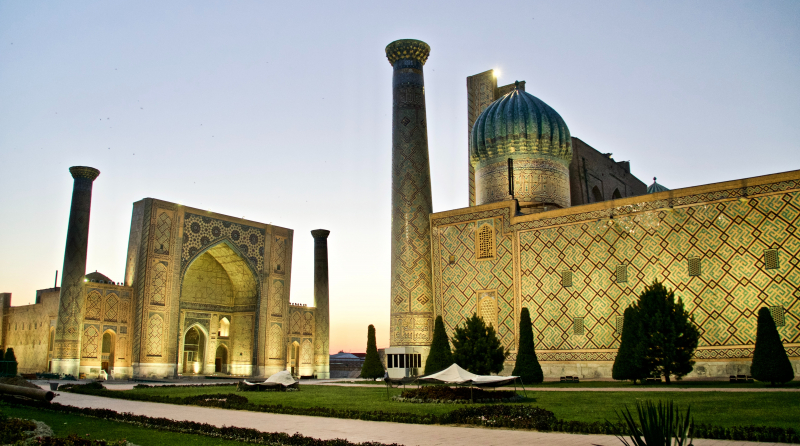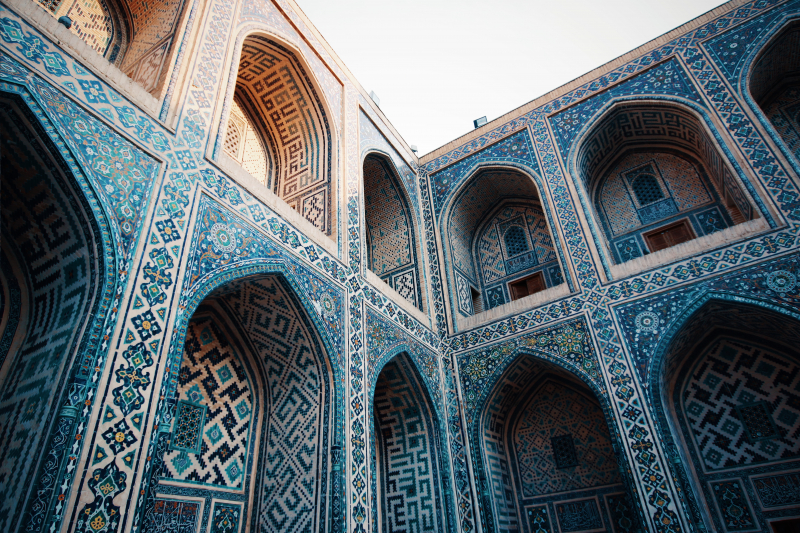ITMO Student
Registan: The Pearl of Central Asia
Registan is the pearl of Central Asia, one of the most magnificent squares in the world, located in the center of old Samarkand. Everyone who is lucky enough to be here cannot remain indifferent: the greatness and beauty of Registan elicits in everyone, without exception, a feeling of delight.

Legend has it that from the beginning of the XV century and up to the beginning of the XX century, public executions took place on the square, and in order for the blood to be absorbed better and not be noticeable, the ground was strewn with sand. Therefore, the square was called Registan ("reg" - sand and "stan" - place) — a place covered with sand. Among other things, it was a place where people gathered, because it was here that all the royal decrees were announced, before the pronouncements of which trumpets were loudly blown. But let usnot forget that initially, at the beginning of the XV century, the square did not yet have any of those unique monuments of medieval oriental architecture, which now surround it from three sides in the form of a beautiful architectural ensemble.
Registan is a large square paved with baked bricks and cobblestones, on which stand three majestic medieval universities, included in the UNESCO World Heritage List in 2001. The center of this ensemble, considered one of the greatest structures of the Islamic world, is the Tilla-Kari madrasah, the Ulugbek madrasah was built to its left, and the Sherdor madrasah to its right.
The construction of the madrasah took place at different times. The first was the Ulugbek madrasah, erected in the period from 1417 to 1420 by order of Timur's grandson, the ruler and astronomer Ulugbek. Two centuries later, by order of the Samarkand ruler Bahodur Yalangtush, two more monumental buildings were built: Sherdor Madrasah and Tillya-Kari Madrasah. Each of the three buildings presents its own unique decor — filigree patterns carved in stone that adorn the walls and portals. The blue domes of the madrasah are made of baked bricks, and the outside is lined with glazed tiles that shine brightly in the sun, no matter from which side it shines. The elegance of the precious mosaics of the Ulugbek madrasah, turquoise domes and majestic minarets of Sherdor, golden wall paintings of Tillya-Kari — all this amazes, surprises and attracts.

However, there was a period when Registan plunged into desolation. From the end of the XVII century and especially in the first half of the XVIII century, the city experienced a crisis: the capital of the khanate was moved to Bukhara, and the Great Silk Road ceased to pass through Samarkand. The Registan madrasahs were empty. According to contemporaries, there was even a period when the city was almost completely deserted, and wild animals lived in the madrasah. By the end of the XVIII century, Samarkand gradually began to come to life, and life on Registan began to boil again: numerous small shops and buildings appeared here again, and maddakhs (storytellers), accompanying the narrative with gestures full of drama, loudly praised the exploits of saints and the heroism of famous warriors of bygone days. In 1875, the square was leveled and paved. Registan, as before, became the center of the city.
Today's Registan continues to amaze and impress and remains forever in the memory and hearts of those who have seen it. Twice a year, a large music festival "Sharq taronalari" ("Melodies of the East") is held on Registan Square, which attracts creative teams from all over Asia. Here, on Registan, other festivals and holidays take place, and on weekdays workshops and benches work on the square, where tourists can buy unique things made by the hands of oriental masters.
You can visit Registan free of charge, but individual excursions, entrance to the museum and other additional entertainment will require some expenses. The prices and variety of such events vary depending on the time of year.
You can visit the square at any time of day, but museums and other institutions in the area have different opening hours.
It is easy to get to the central square of Samarkand from any part of the city. Most public transport routes make stops near Registan. You can focus on the shiny domes of the madrasah, which are clearly visible from almost everywhere.
